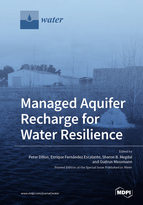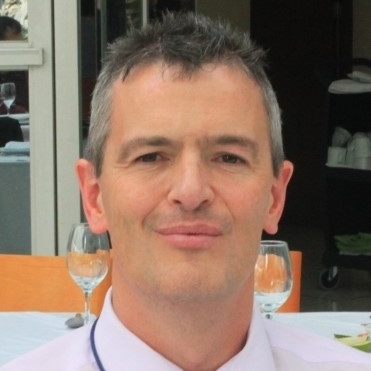Managed Aquifer Recharge for Water Resilience
A special issue of Water (ISSN 2073-4441). This special issue belongs to the section "Water Resources Management, Policy and Governance".
Deadline for manuscript submissions: closed (20 November 2019) | Viewed by 100194
Special Issue Editors
Interests: hydrogeology; water quality protection; risk management; policy
Special Issues, Collections and Topics in MDPI journals
Interests: IWRM; hydrogeology; technical solutions for water management; design and construction criteria
Special Issues, Collections and Topics in MDPI journals
Interests: comparative evaluation of water management; policy and governance in water-scarce regions; groundwater recharge; and transboundary aquifer assessment
Special Issues, Collections and Topics in MDPI journals
Special Issue Information
Dear Colleagues,
MAR is part of the palette of solutions to water shortage, water security, water quality decline, falling water tables, and endangered groundwater dependent ecosystems. It is often the most economic, most benign, most resilient, and most socially acceptable solution, but has not been considered out of lack of awareness, inadequate knowledge of aquifers, immature perception of risk, and incomplete policies for integrated water management, including linking MAR with demand management. MAR can achieve much towards solving the myriad of local water problems that have collectively been termed “the global water crisis” if it is included among the options evaluated locally. This Special Issue strives to make transparent the effectiveness, benefits, constraints, limitations, and applicability of MAR, together with its supporting scientific advances, to a wide variety of situations that have global relevance. This special issue was initiated by the IAH Commission on Managing Aquifer Recharge to capture and extend from selected papers at the 10th International Symposium on Managed Aquifer Recharge (ISMAR10) held in Madrid, Spain 20-24 May 2019. It also gives an opportunity for including additional highly relevant and timely papers submitted to J Water.
Topics include MAR and:
| 1. Integrated water resources assessment | 11. Monitoring |
| 2. Adaptation to climate change | 12. Modeling |
| 3. Case studies | 13. Ecosystems |
| 4. Mapping | 14. Coastal areas |
| 5. Economics | 15. Environmental impacts and risks |
| 6. Commerce and energy | 16. Water quality and hydrogeochemistry |
| 7. Water reuse | 17. Health aspects |
| 8. Sustainable technical solutions | 18. Urban rainwater and stormwater |
| 9. Clogging | 19. R&D projects |
| 10. Regulations and policies | 20. Education and training and social impacts |
Dr. Peter Dillon
Dr. Enrique Fernandez Escalante
Dr. Sharon B. Megdal
Dr. Gudrun Massmann
Guest Editors
Manuscript Submission Information
Manuscripts should be submitted online at www.mdpi.com by registering and logging in to this website. Once you are registered, click here to go to the submission form. Manuscripts can be submitted until the deadline. All submissions that pass pre-check are peer-reviewed. Accepted papers will be published continuously in the journal (as soon as accepted) and will be listed together on the special issue website. Research articles, review articles as well as short communications are invited. For planned papers, a title and short abstract (about 100 words) can be sent to the Editorial Office for announcement on this website.
Submitted manuscripts should not have been published previously, nor be under consideration for publication elsewhere (except conference proceedings papers). All manuscripts are thoroughly refereed through a single-blind peer-review process. A guide for authors and other relevant information for submission of manuscripts is available on the Instructions for Authors page. Water is an international peer-reviewed open access semimonthly journal published by MDPI.
Please visit the Instructions for Authors page before submitting a manuscript. The Article Processing Charge (APC) for publication in this open access journal is 2600 CHF (Swiss Francs). Submitted papers should be well formatted and use good English. Authors may use MDPI's English editing service prior to publication or during author revisions.
Keywords
- groundwater biogeochemical processes
- groundwater replenishment
- water quality improvement
- water security and risk
- governance and economics









